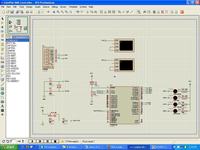yahya_shokr
Newbie level 2
gsm modem projects
DEAR FRIENDS,
THERE IS A LOT OF DISCUSSIONS ON SENDING THE SMS THROUGH MOBILE PHONE
LETS NOW TALK ABOUT RECEIVING sms AND MAKING A RELAY ON WITH 8051 CONTROLLER.
NOW> I'm trying to connect my 8051 u.C wz the T28 Ericsson mobile phone to make a smart system that can control many devices depend on GSM network already installed in my country and also i choose the mobile phone not a GSM module cause i can have a mobile cheaper that the GSM module and the mobile phone is a friendly device to any user
simply i want to send any number using SMS to the T28 phone that connected to the u.C then i can read that SMS and make the order i need to do using relays or any thing else connected to the u.C too
IF SOME ONE HAS DONE ANYTHING.. ABOUT THIS USING 'AT commands',
please share it
---> reply and share only -----> 8051 with mobile phone
( not with GSM module and fbus)
waiting for some expert to break the silence on this topic.
my findings till now are below.
--reciving sms in text mode are not performing the job. to make the relay on with sms.
-- may be forcefully need to apply the PDU mode.
please comment and show the way THIS can help a lot of forum members.
- YaHyA
DEAR FRIENDS,
THERE IS A LOT OF DISCUSSIONS ON SENDING THE SMS THROUGH MOBILE PHONE
LETS NOW TALK ABOUT RECEIVING sms AND MAKING A RELAY ON WITH 8051 CONTROLLER.
NOW> I'm trying to connect my 8051 u.C wz the T28 Ericsson mobile phone to make a smart system that can control many devices depend on GSM network already installed in my country and also i choose the mobile phone not a GSM module cause i can have a mobile cheaper that the GSM module and the mobile phone is a friendly device to any user
simply i want to send any number using SMS to the T28 phone that connected to the u.C then i can read that SMS and make the order i need to do using relays or any thing else connected to the u.C too
IF SOME ONE HAS DONE ANYTHING.. ABOUT THIS USING 'AT commands',
please share it
---> reply and share only -----> 8051 with mobile phone
( not with GSM module and fbus)
waiting for some expert to break the silence on this topic.
my findings till now are below.
--reciving sms in text mode are not performing the job. to make the relay on with sms.
-- may be forcefully need to apply the PDU mode.
please comment and show the way THIS can help a lot of forum members.
- YaHyA
